How do you find your style? What is a style in drawing?
These are questions I get sometimes, and it’s not easy to answer. Style is an identifiable way of expression, that when you see it, you know whose drawing it is. There is also style of humor, and style of viewpoint in cartoon art. All of these work together to create something immediately recognizable.
Style is sometimes decided on, but more often it emerges from the artist over time. Sometimes starting at a young age. This is how it began for me. I started drawing cartoons at age 7 and my style as emerged from those early efforts, with little or no conscious choices.
Here is a page I drew early on, influenced by one of my parents’ parties.
You can see that I had learned by tracing the work of James Thurber. As a kid, I did not understand his captions, but I loved his people.
His style was easily recognizable. No one at the time (1930’s and 40’s) drew like Thurber. And his line worked with his captions.
Saul Steinberg had such a way of drawing that many in the art world considered his work in a different category than “cartoons.”
I was, and continue to be, a big fan of his work.
Another person with great style was George Price, also an early influence. He drew for The New Yorker from 1929-1980’s.
Price maintained his style throughout his life. William Steig, however, began with one style and changed it later in life. Lucky enough to meet Steig once, I was not brave enough to ask him about this change. I loved his later drawings particularly, when he used only line and no wash. Here is an early drawing of his, maybe from the 1930’s:
And then a later drawing, probably from the 1970’s.
Charles Addams had a style of drawing and a style of macabre humor—it became his trademark. Many cartoonists have been influenced by Addams.
Ed Koren had a style that was unmistakeable, and he kept that way of drawing throughout his career (we sadly just lost him a few months ago). Ed’s style consisted of a habit of drawing fuzzy, made-up creatures in a scritchy, “nervous” penmanship. He said in an interview with Michael Maslin, he had a fascination with fur.
My bent was always line drawing, and you can see it in my first drawings for The New Yorker. Here is an early one, around 1983.
My friend and colleague Roz Chast has a very identifiable style. This is an early cartoon of hers in The New Yorker, we started about the same time, within a year of each other. She had such a unique style that it concerned some of the older cartoonists who didn’t understand her drawing style, or her sense of humor (she has said many times that one such older gentleman even asked her “Why do you draw the way you draw?”). She went on to do drawings about anxiety and worries, and it has become her trademark style of humor.
In the 1990’s I began to add more wash to my drawings, and I really cannot tell you why.
And I started a “style” of humor that was women being snarky, sometimes at the expense of men.
This heavy wash style I experimented with has since gone; a conscious decision. Perhaps it was a sort of going back to my roots. It first started with less wash in the 2000’s...
And now it is often hardly any wash, wanting to give the pen line as much attention as possible.
This is one with mostly just line. There’s just enough grey tone wash to distinguish the people
Finally, this was my first cartoon published in The New Yorker in 1982. No wash whatsoever.
There are so many styles in this world of cartoon art, I could keep showing you the work of people whose drawings I love and who have developed—consciously or unconsciously— a unique voice in drawing. One final favorite cartoonist who has a unique style is Michael Maslin (my husband).
His early work looked like this, before I knew him. This was a drawing that was bought by The New Yorker— but not for the drawing. They gave the caption to another cartoonist (Whitney Darrow, Jr.) to draw, not an uncommon thing to do with new artists.
Then, after a few such sales (Addams included), the magazine bought both this drawing and with his caption.
Michael’s style hasn’t changed all that much over the years. If he uses any grey tone— which is not that often—he uses black pencil (I use black watercolor). We are both Thurber descendants, and you can see it in how we draw. But— and this is key to a unique style— we each made that inclination to favor simple lines our own. Influences are always there, it’s how you process the influence in your work.
Style is hard to define, but you know it when you see it. The great cartoonists are ones who have both style in drawing, style in terms of humor and in the wonderful worlds they create.
And when you see their work, you just enter their world, and laugh.


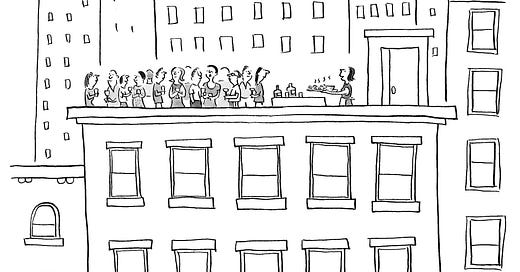


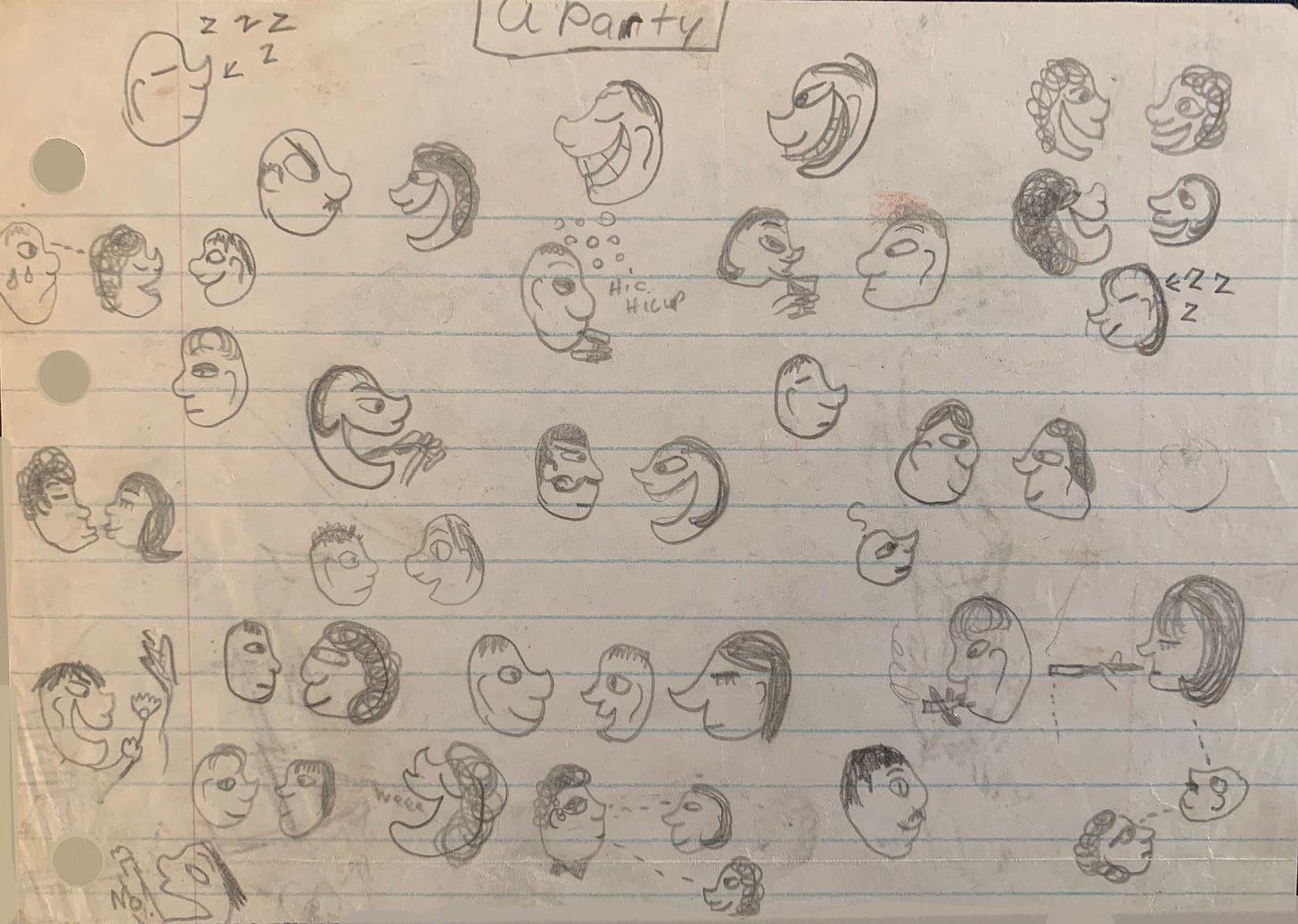
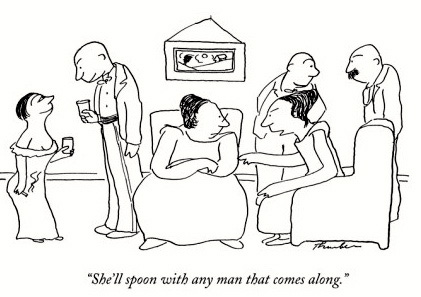
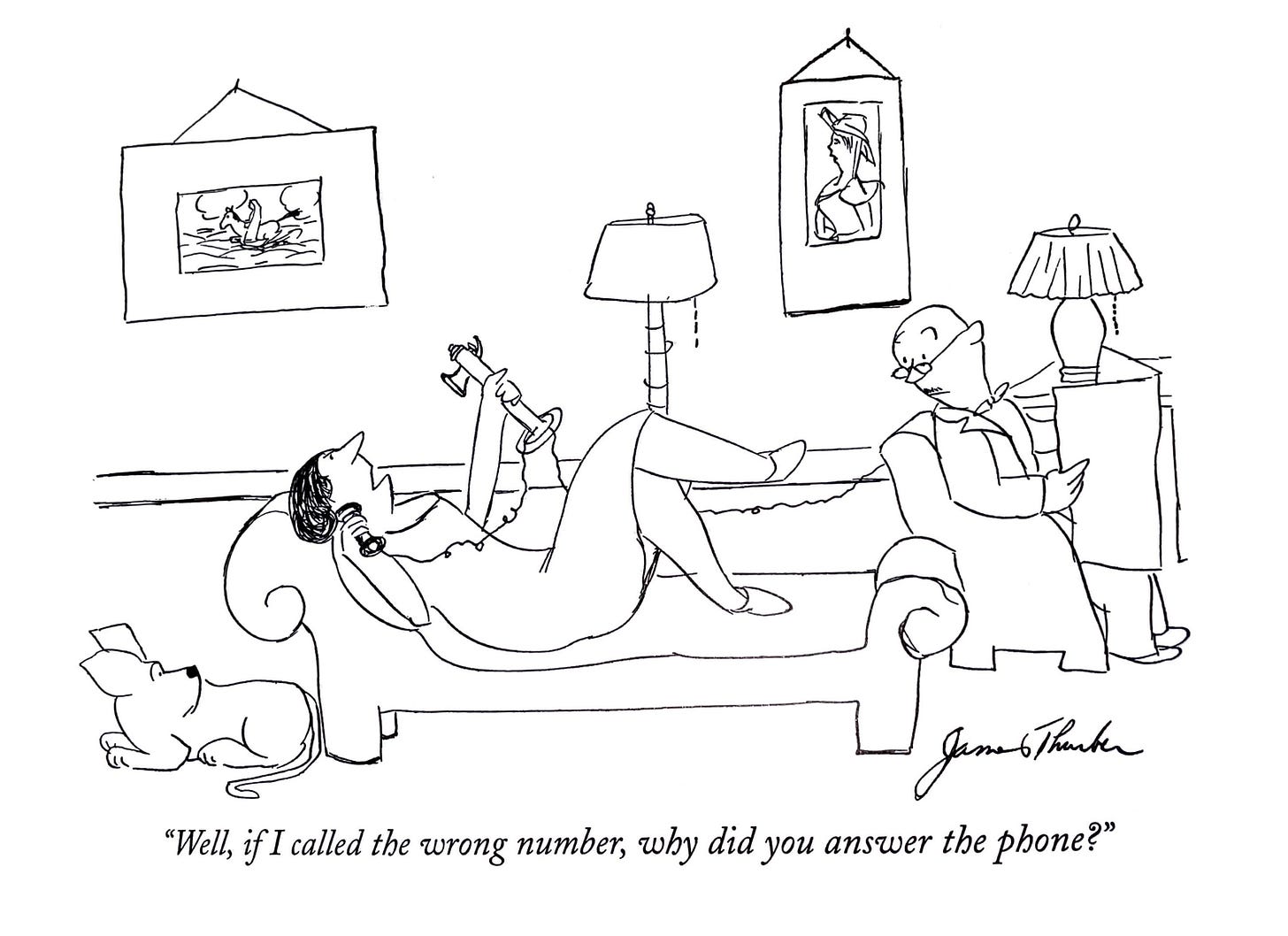
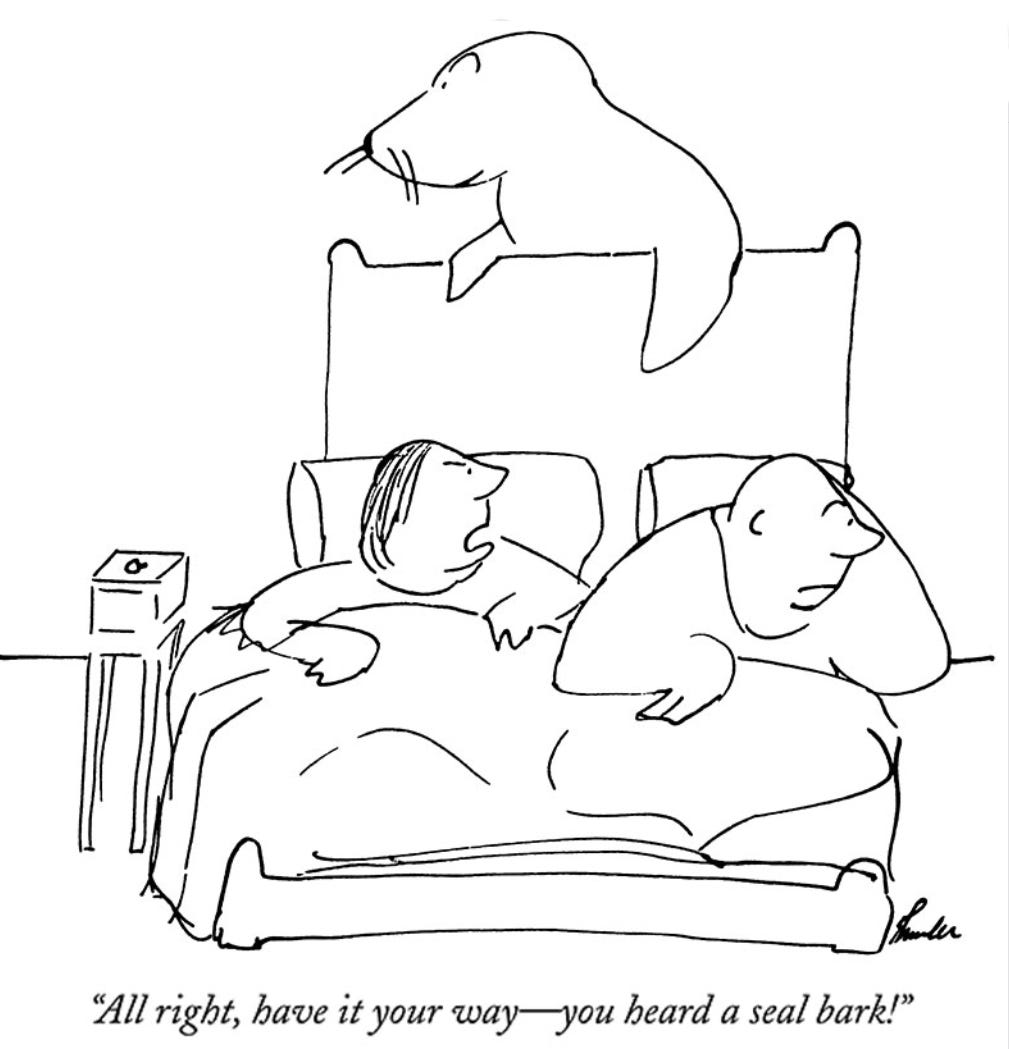

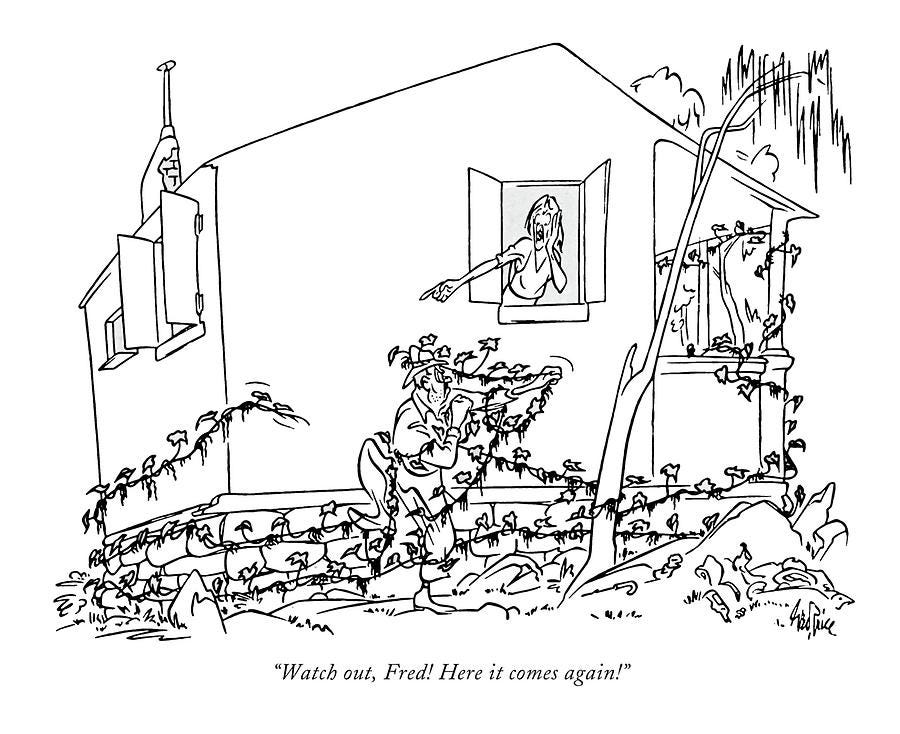
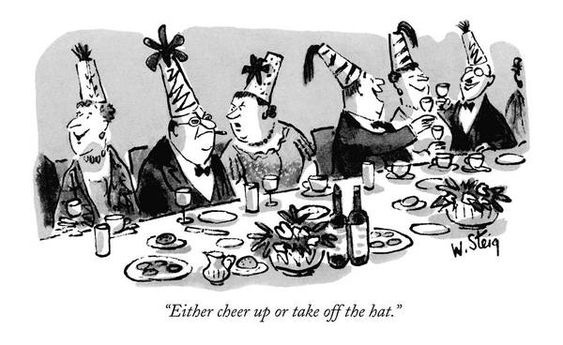
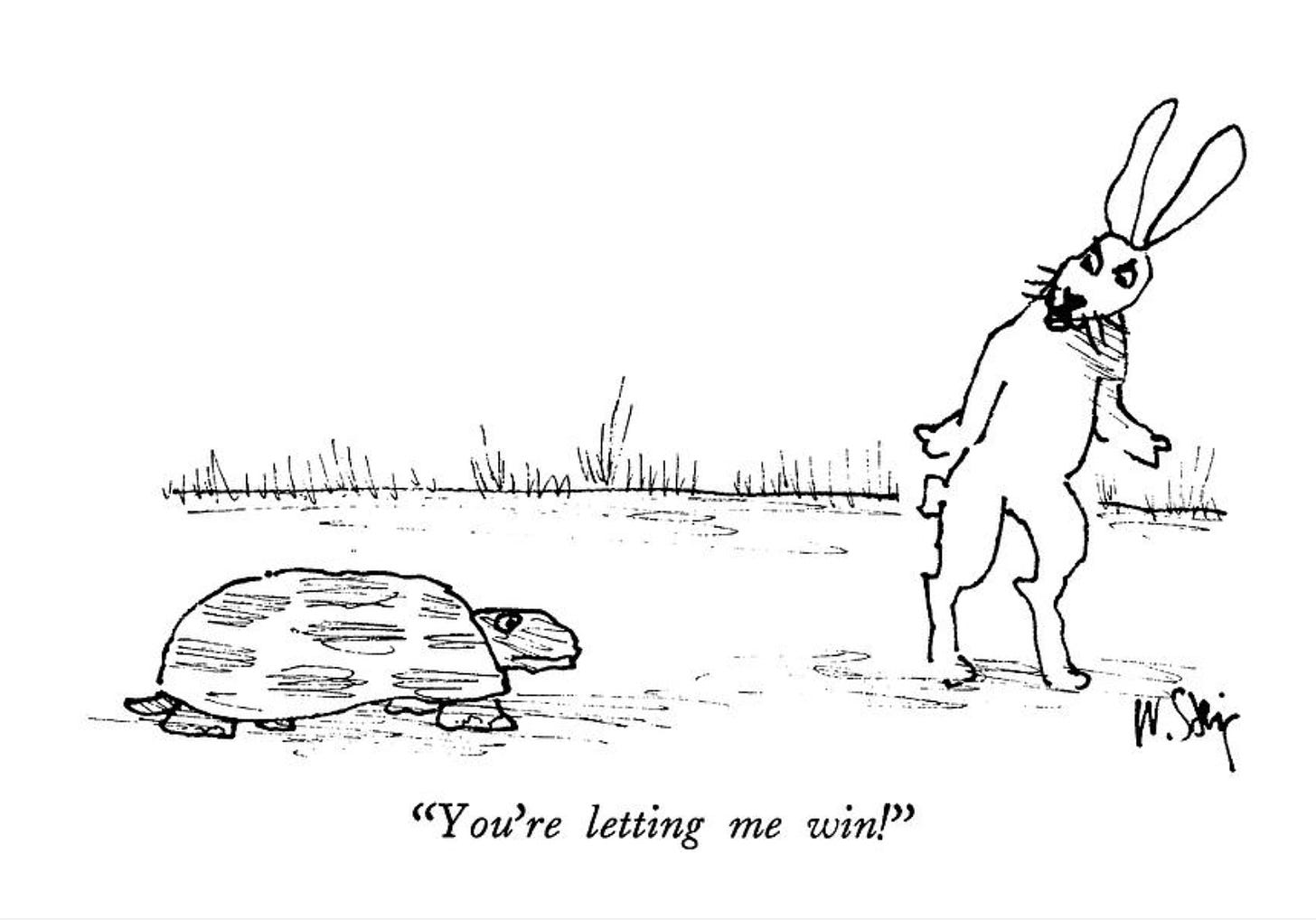
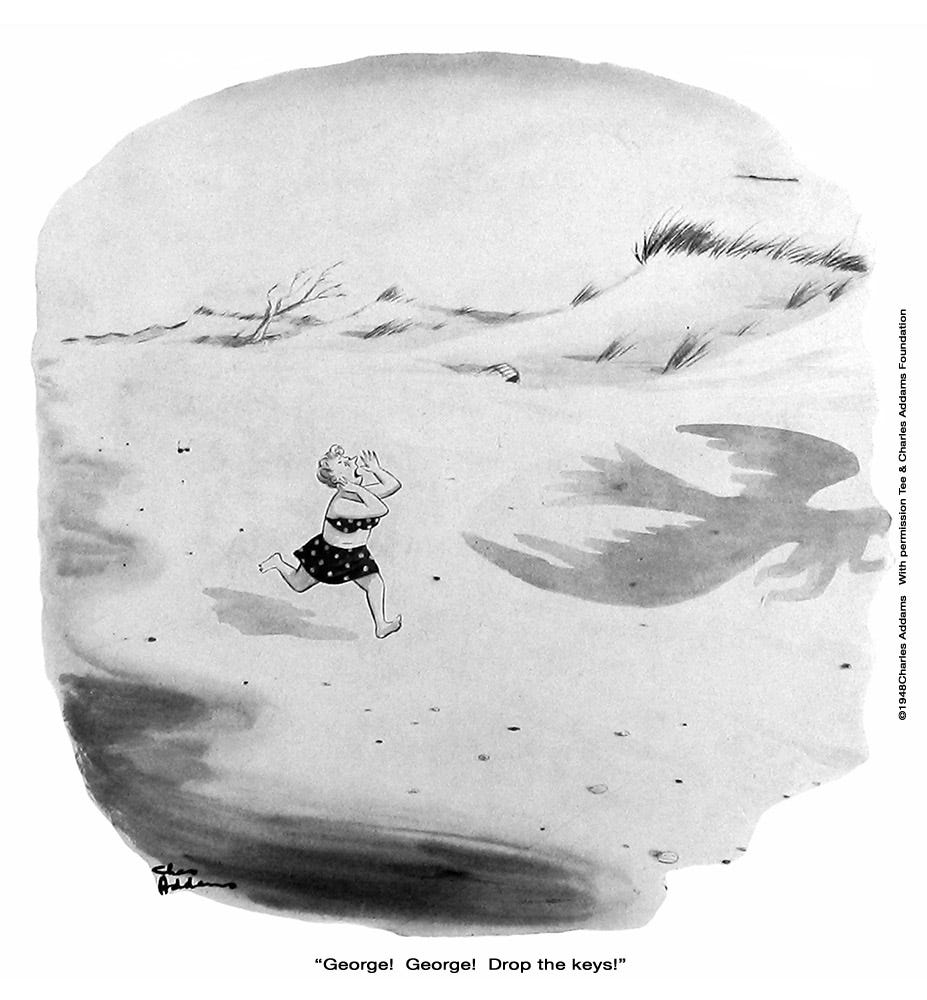
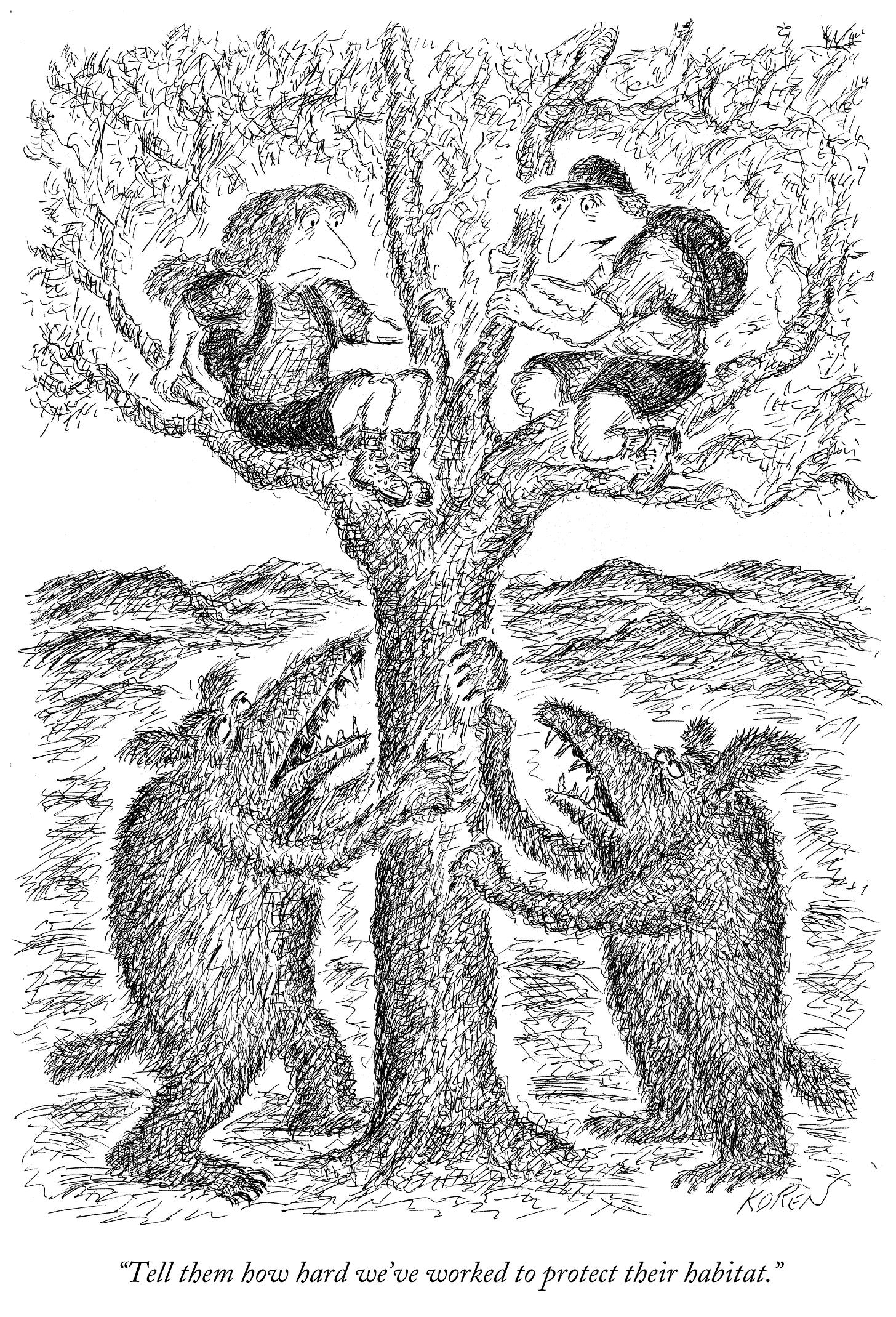
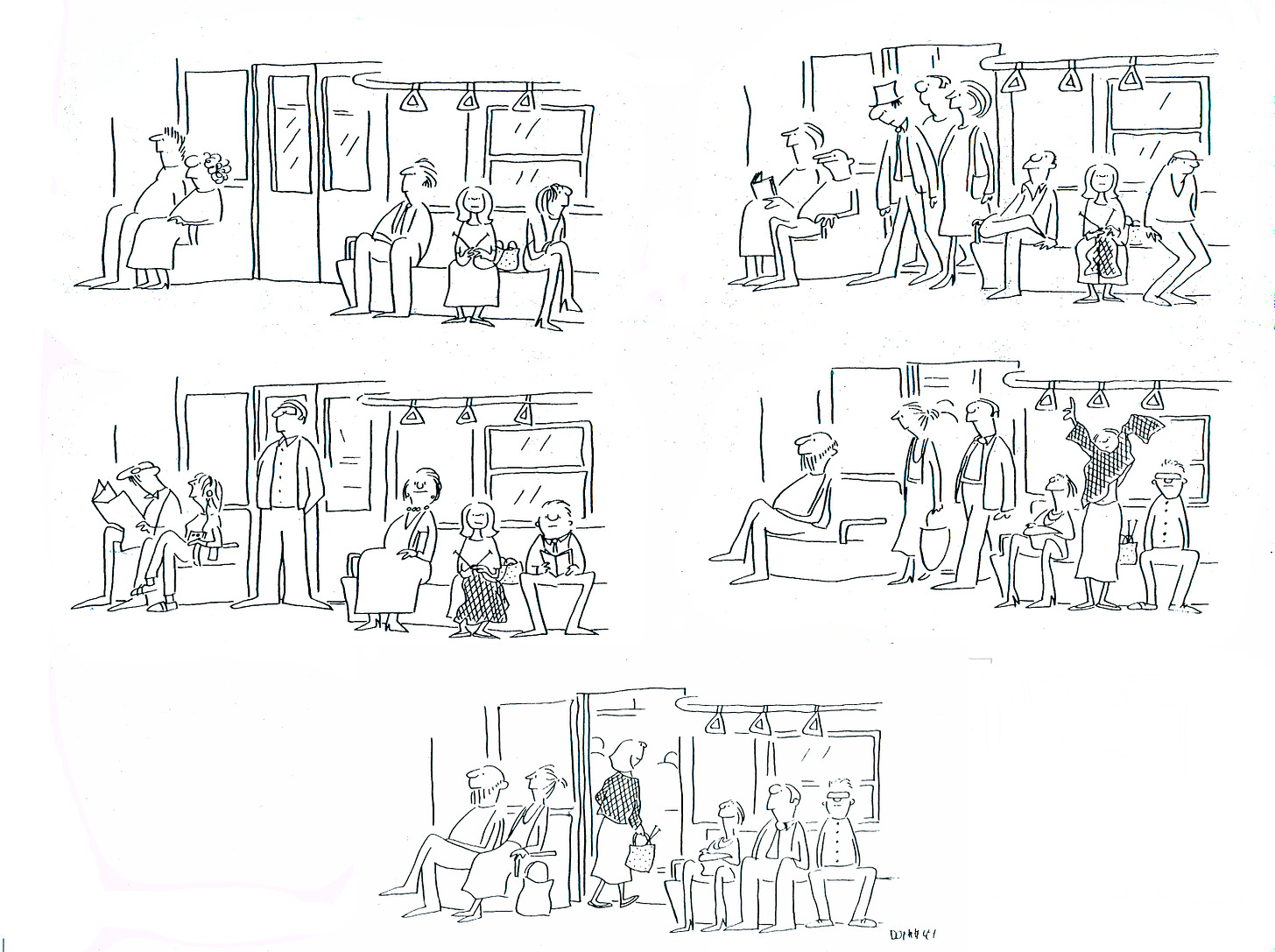
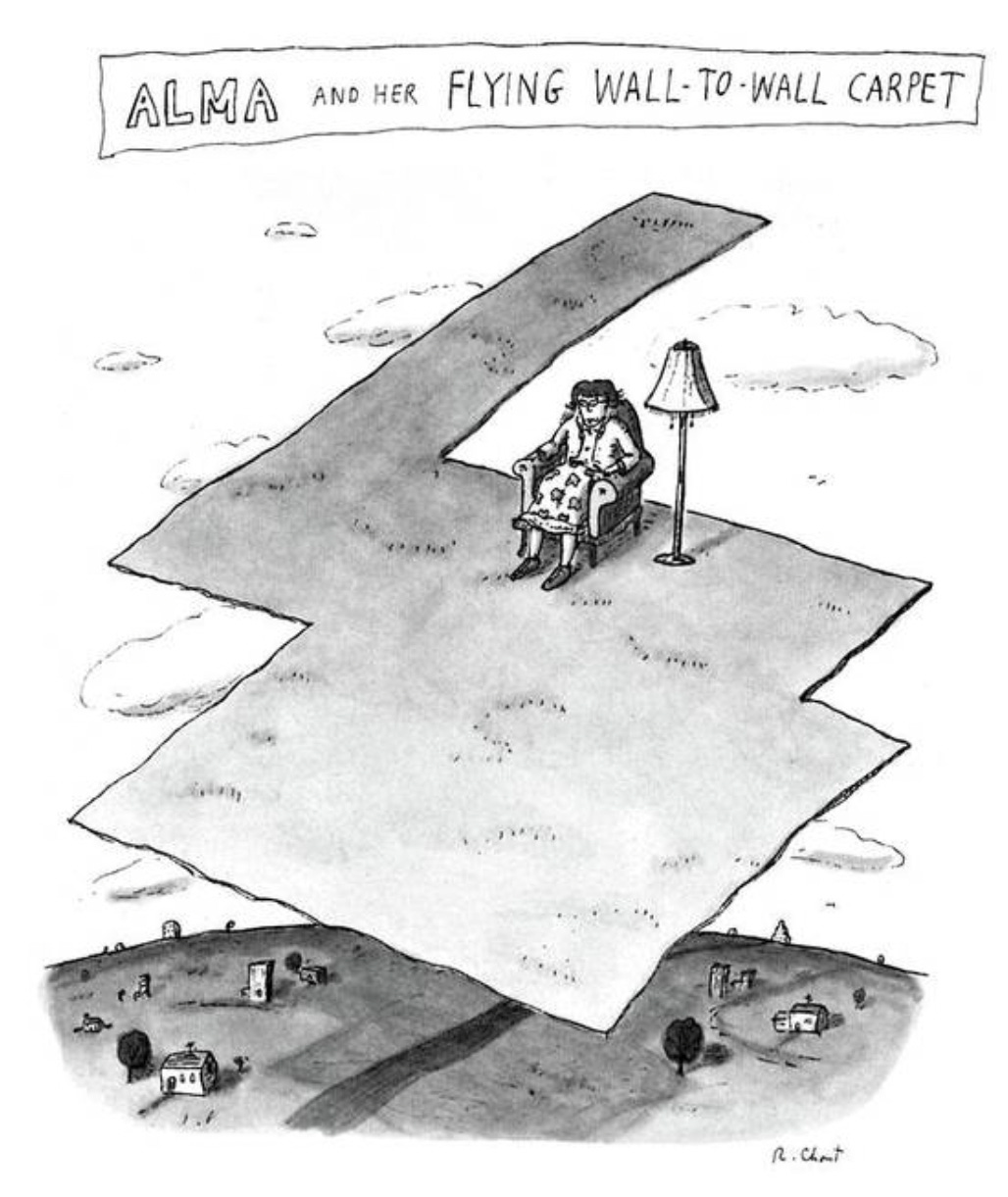
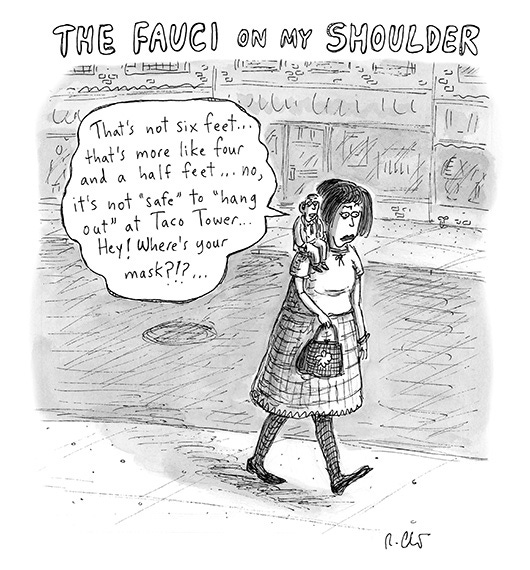
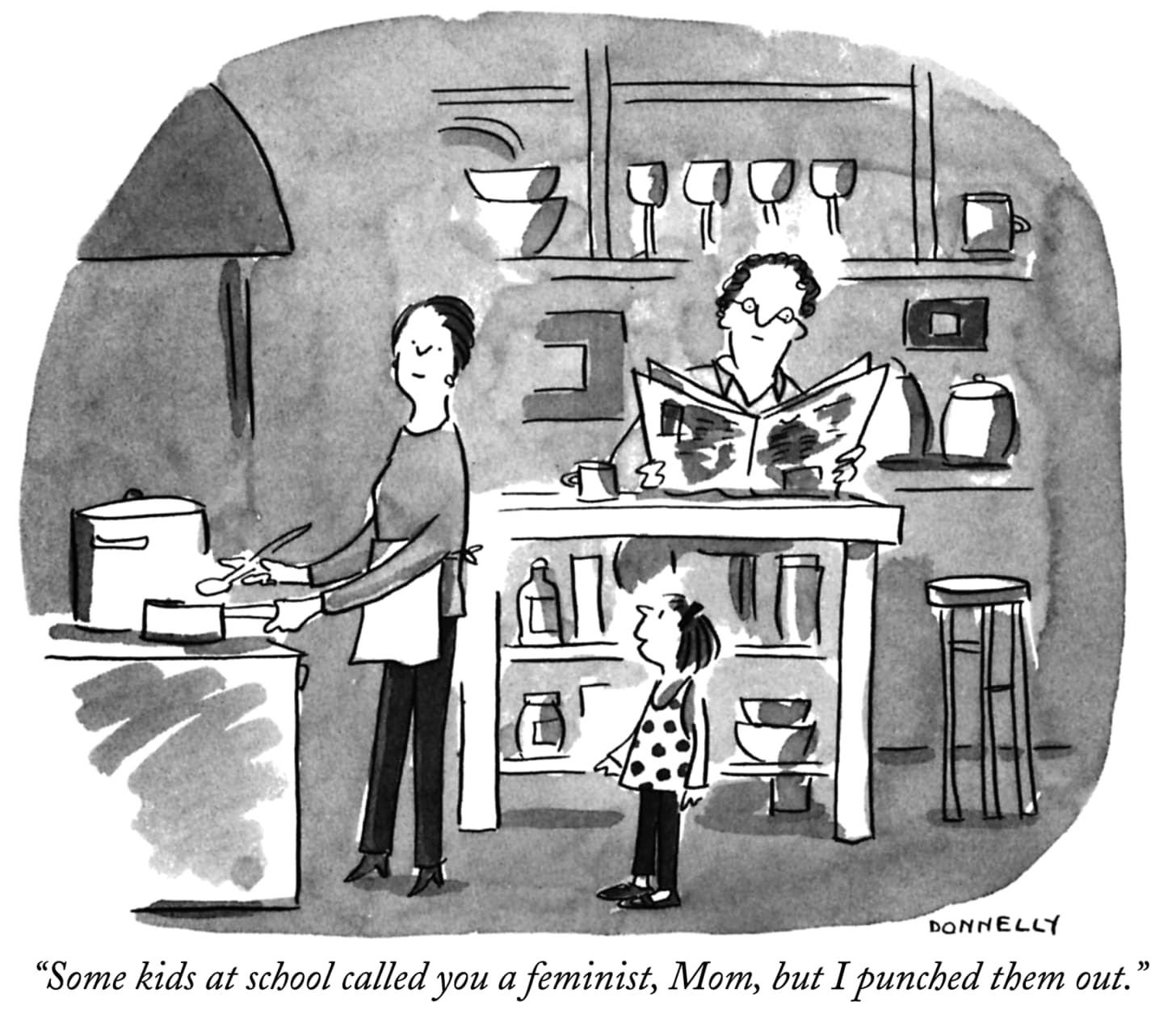
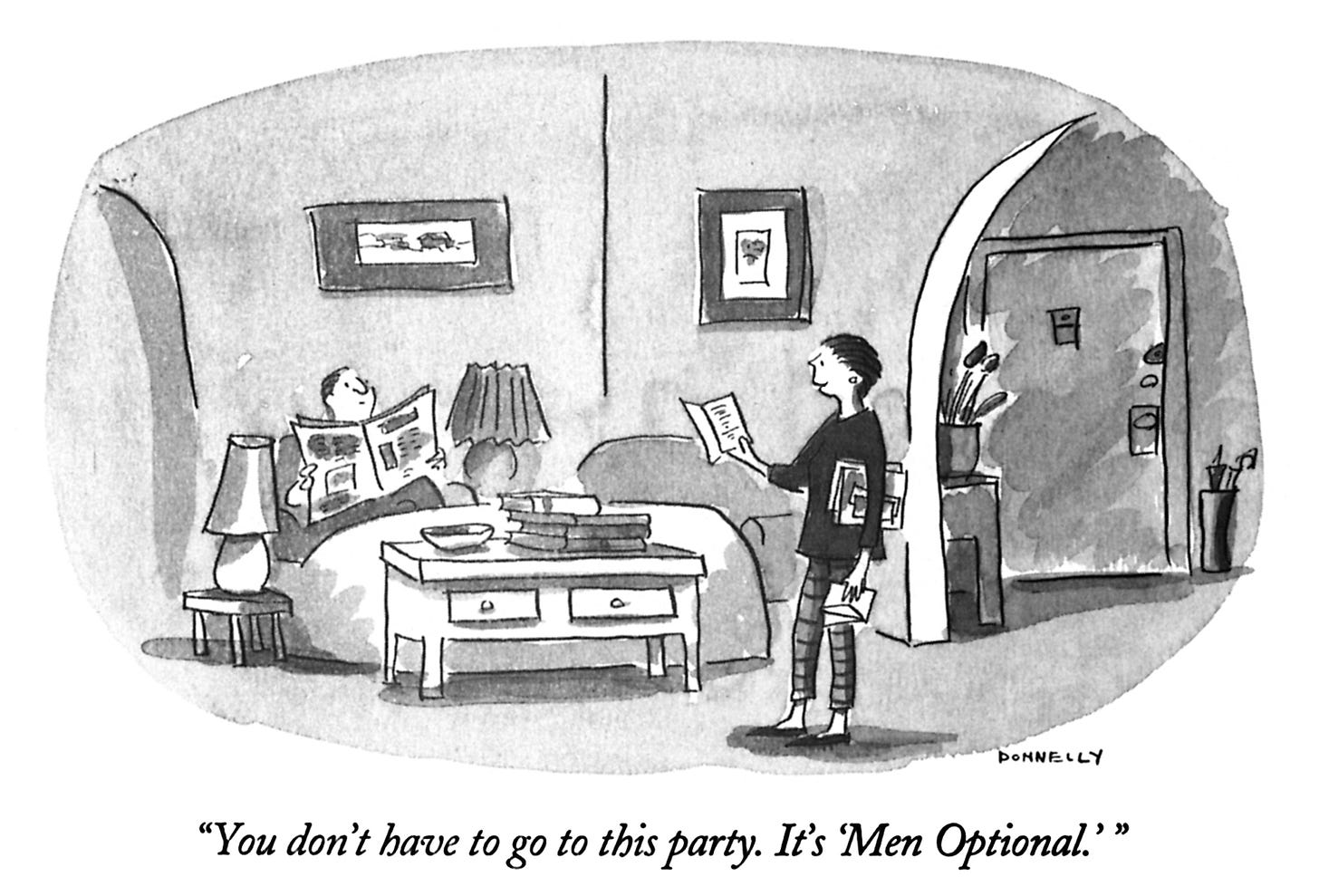
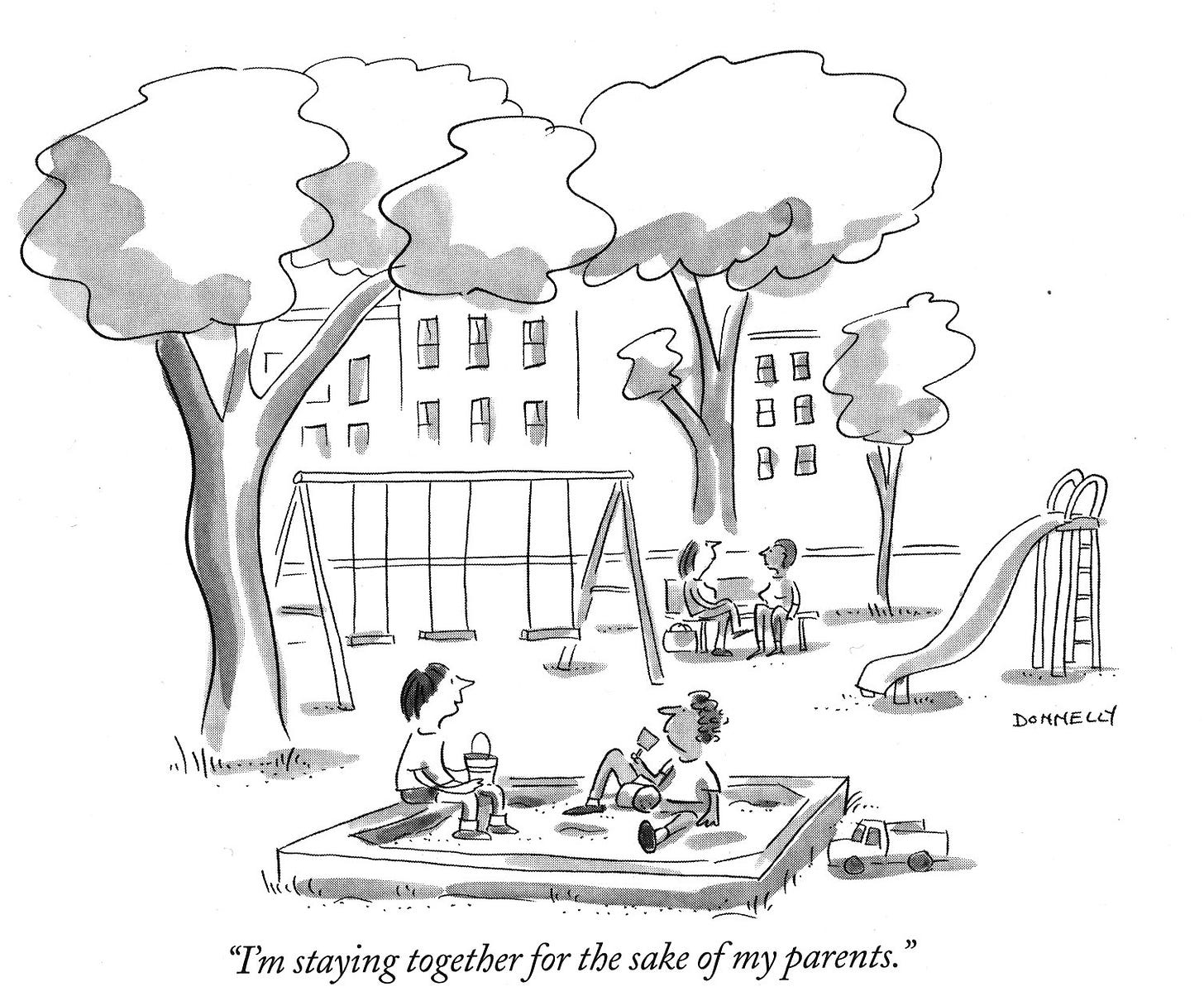
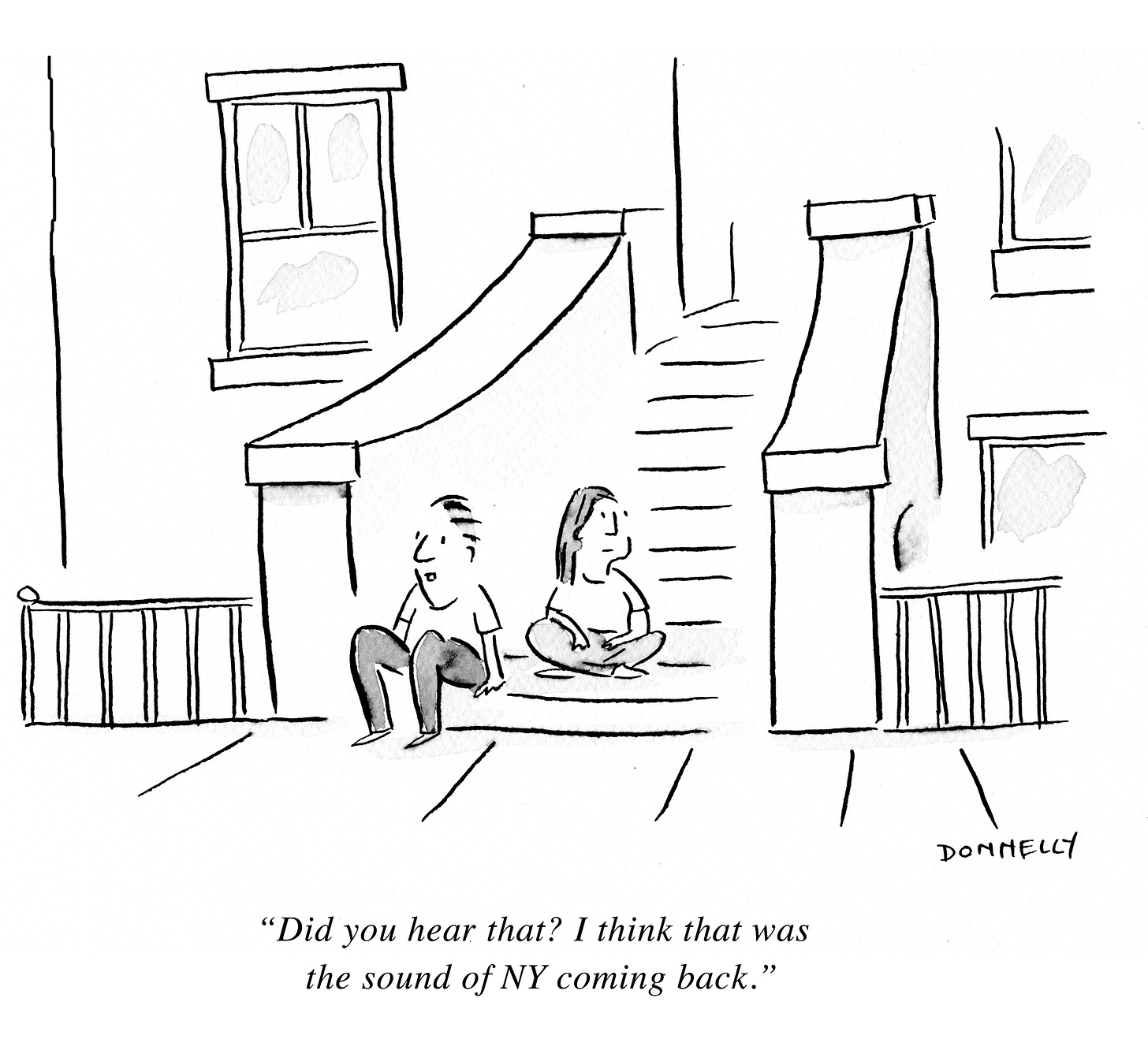

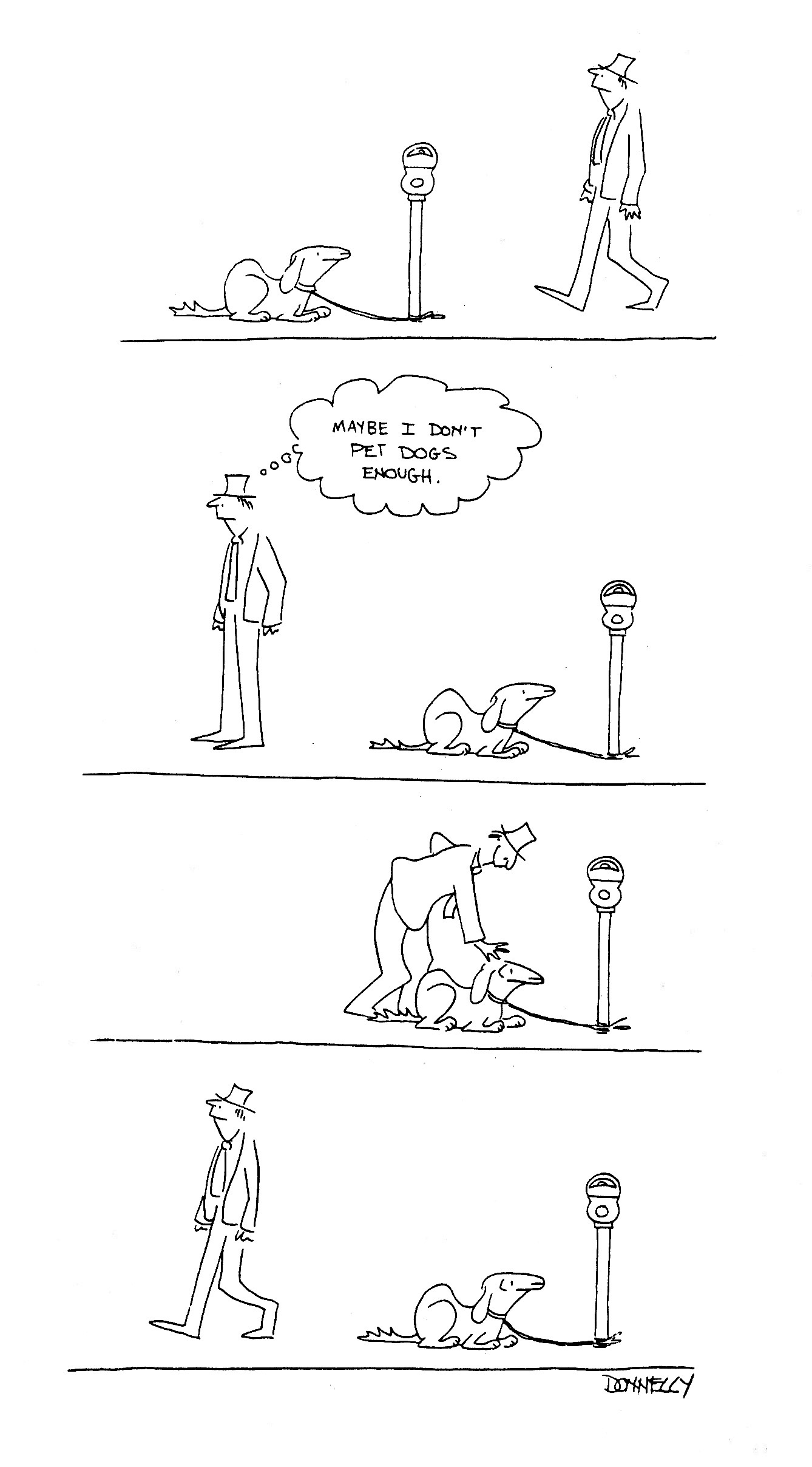
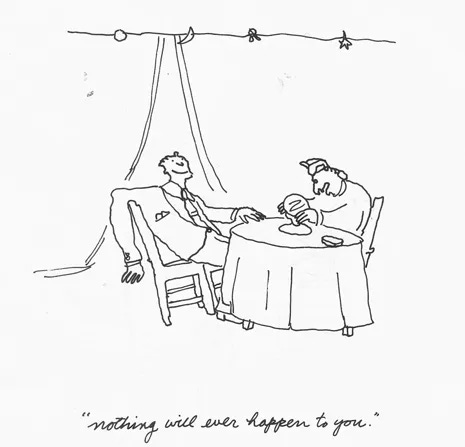
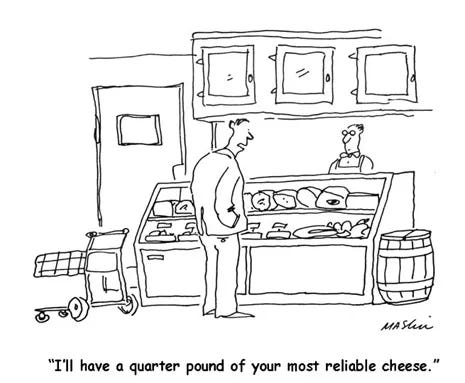
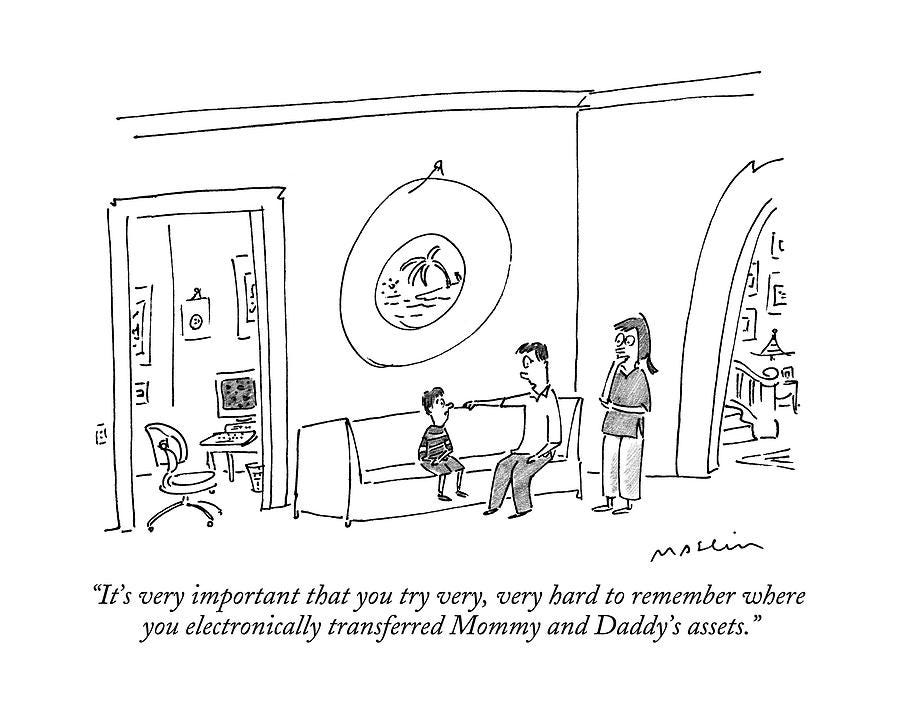
Funny, all the cartoonists you refer to have always been my favorites. I did two books with Roz. Her humor grows on you,.then it overtakes you, and finally, gobbles you down. I love your line drawing about finding Mommy and Daddy's assets. I have the one you did for Erma with the kids in the sandbox, framed and in my bathroom, next to a Cathy Guisewite. You guys bring such joy...always.
So enlightening and beautiful and funny and smart. Love this entry so much. Thanks, Liza.